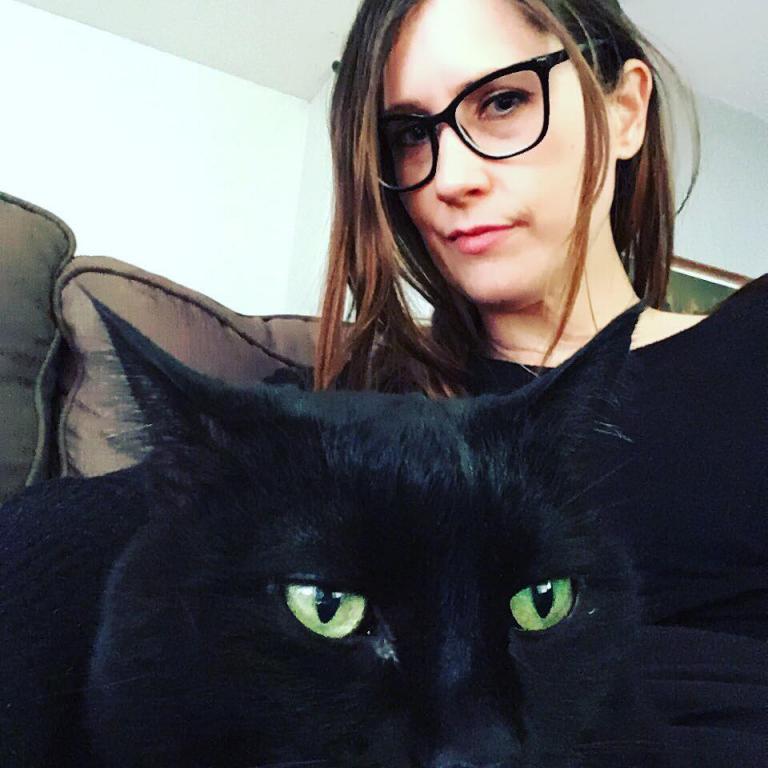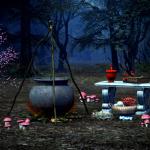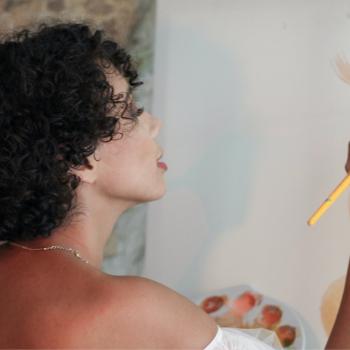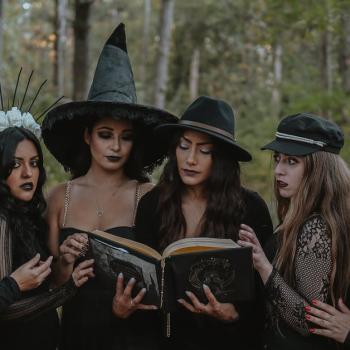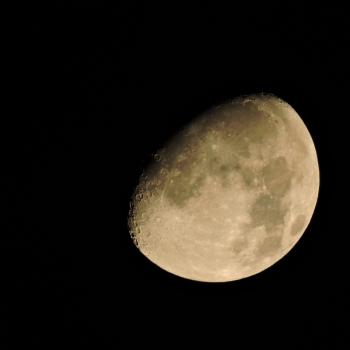Every winter, my city puts up big snowflake sigils on the main road. Whether they know it or not, they’re using sigil magic to create a sense of community.
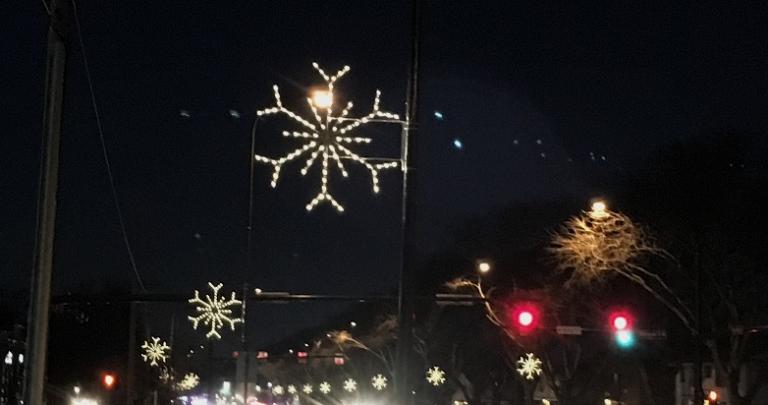
Something about the giant snowflakes lining the main road seemed magical and whimsical. They lifted my heart! It wasn’t until I went to Tempest’s workshop about her Sigil Witchery book that it all came together in my mind. These giant snowflakes are magical symbols, or a sigils. Six arrows point inward, to form a circle. These sigils promote a sense of community and coming-togetherness. They might also encourage spending in the area.
After this clicked in my mind, I started noticing ‘snowflake sigils’ everywhere. On business doors. On products for sale. On signs at work. They seemed to have very different meanings. Let’s take a look…
The snowflake sigil below looks like it’s composed of six Algiz runes. One of these runes represents higher spiritual energy and awareness, divine protection, alignment with the sacred, and a blessing from the gods. Phsew! That’s a lot! And six of them bound together is even more of a powerful statement!
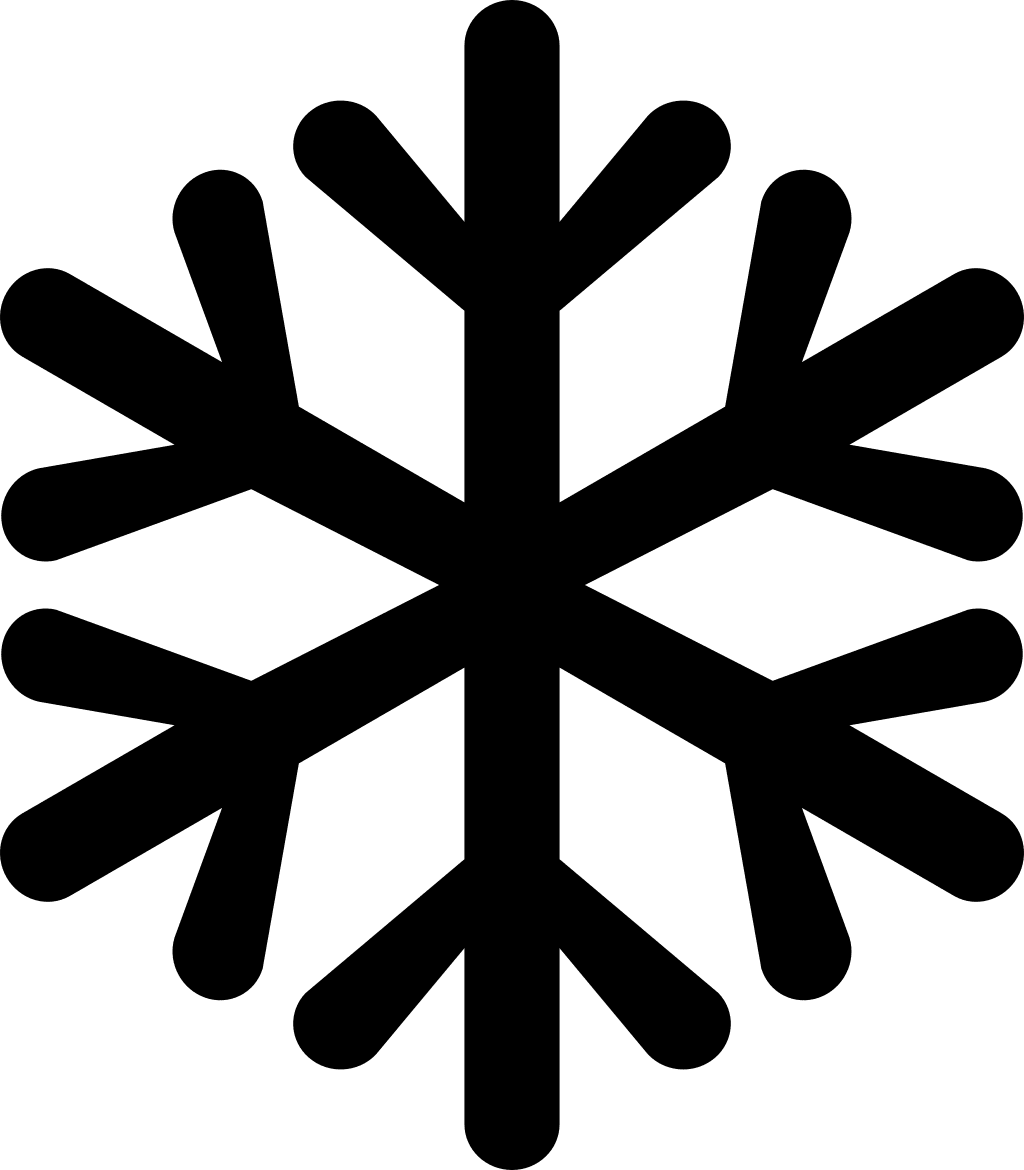
But not all snowflake sigils are positive. Others appear to have barbed parts, such as the one below. These may be more protection-based.
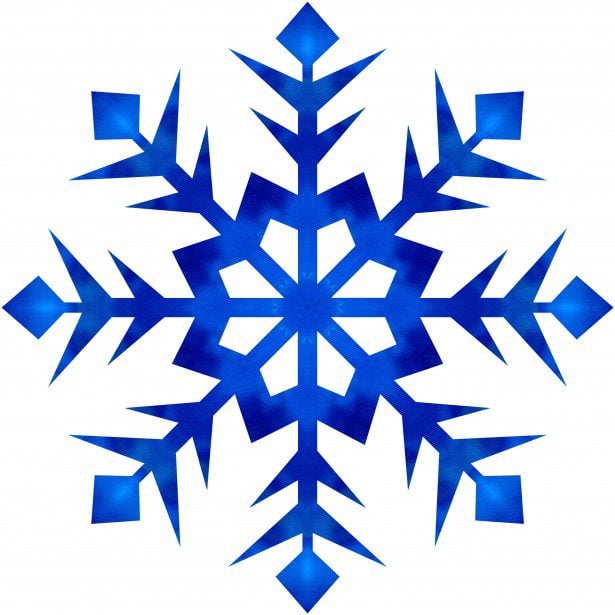
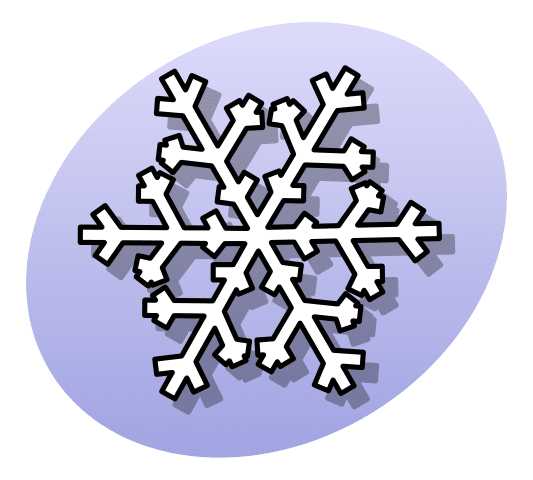
These snowflake sigil above has stubby parts that appear to have been pruned to an extreme degree. This sigil may also be somewhat protective, or at least restrictive of growth. It says, “don’t get too comfortable here. We cut things.”
When I look at snowflakes to see if they might be sigils, I first look for iconic shapes. What recognizable designs are there, and what do they represent?
I then look at the outer ends. Are they rounded (friendly), solid (normal), or pointy (with a sharp, needling quality)?
Lastly, I look at the center. What is unifying these images? Is it a circle, representing the whole? Or a diamond, representing wealth? What about a star?
I associate different meanings with how many points are present. If there’s nothing at all, shift the focus to interpret the bound images.
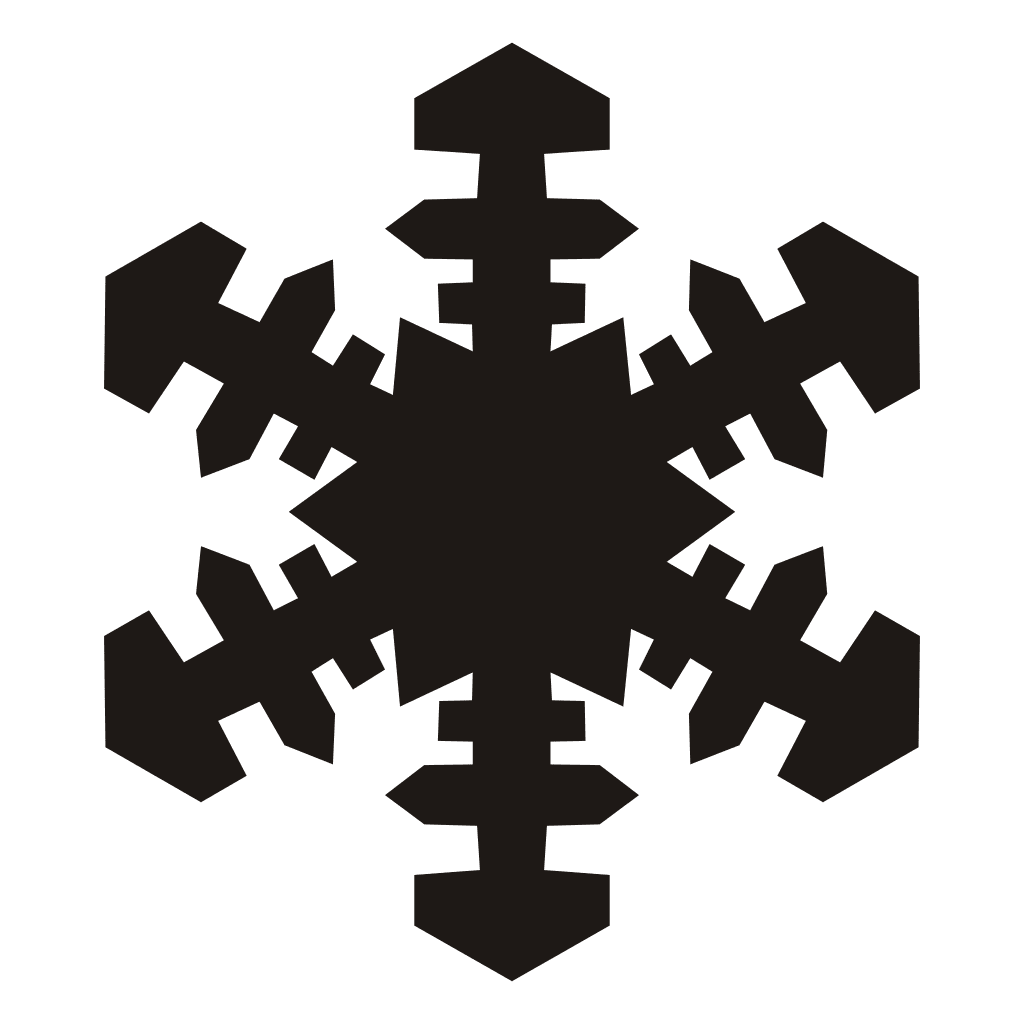
However, take these insights with a salt bowl. You can read into things, and they may not be true. For example, the snowflake sigil above appears to be homes stacked on top of fenceposts, which meet in the middle with a six-pointed star. Is it a Jewish home/community protection sigil? Or just a weird design?
The next time you see a drawing of a snowflake, take a look at the deeper meaning. What is really being said? Use your intuition. If nothing else, it’s a fun practice to help you get through the winter.
If you’re interested in learning more about sigils in general, I highly recommend Tempest’s book on Sigil Witchery.
~ Align with Starlight Witch ~
Intuitive Witchcraft: How To Use Intuition to Elevate Your Craft
* Facebook * Twitter * Instagram *
Blessed Be Subscription Box
Intuitive Witchcraft Facebook Group
If you enjoyed this post on finding magic everywhere, check out my article on 6 Amazing Things About Owning Your Magic, or how Witchcraft and Magic are Ancient.
Thanks for reading!

